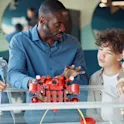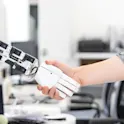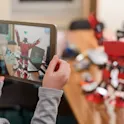Wearable devices may prevent astronauts getting ‘lost’ in space
by Angharad Brewer Gillham, Frontiers science writer Image/Shutterstock.com Losing your sense of where you are can be fatal enough for aircraft pilots: spatial disorientation is a leading cause of fatal aircraft accidents. But losing your orientation in space itself is even more dangerous. Scientists have now developed wearable devices called vibrotactors that, combined with specialized training, improve people’s ability to fight spatial disorientation and could help astronauts correct themselves when their perceptions can no longer be relied upon. The sky is no longer the limit — but taking flight is dangerous. In leaving the Earth’s surface, we lose many of the cues we need to orient ourselves, and that spatial disorientation can be deadly. Astronauts normally need intensive training to protect against it. But scientists have now found that wearable devices which vibrate to give orientation cues may boost the efficacy of this training significantly, making spaceflight slightly safer. “Long duration spaceflight will cause many physiological and psychological stressors which will make astronauts very susceptible to spatial disorientation,” said Dr Vivekanand P. Vimal of Brandeis University in the United States, lead author of the article in Frontiers in Physiology. “When disoriented, an astronaut will no longer be able to rely […]













